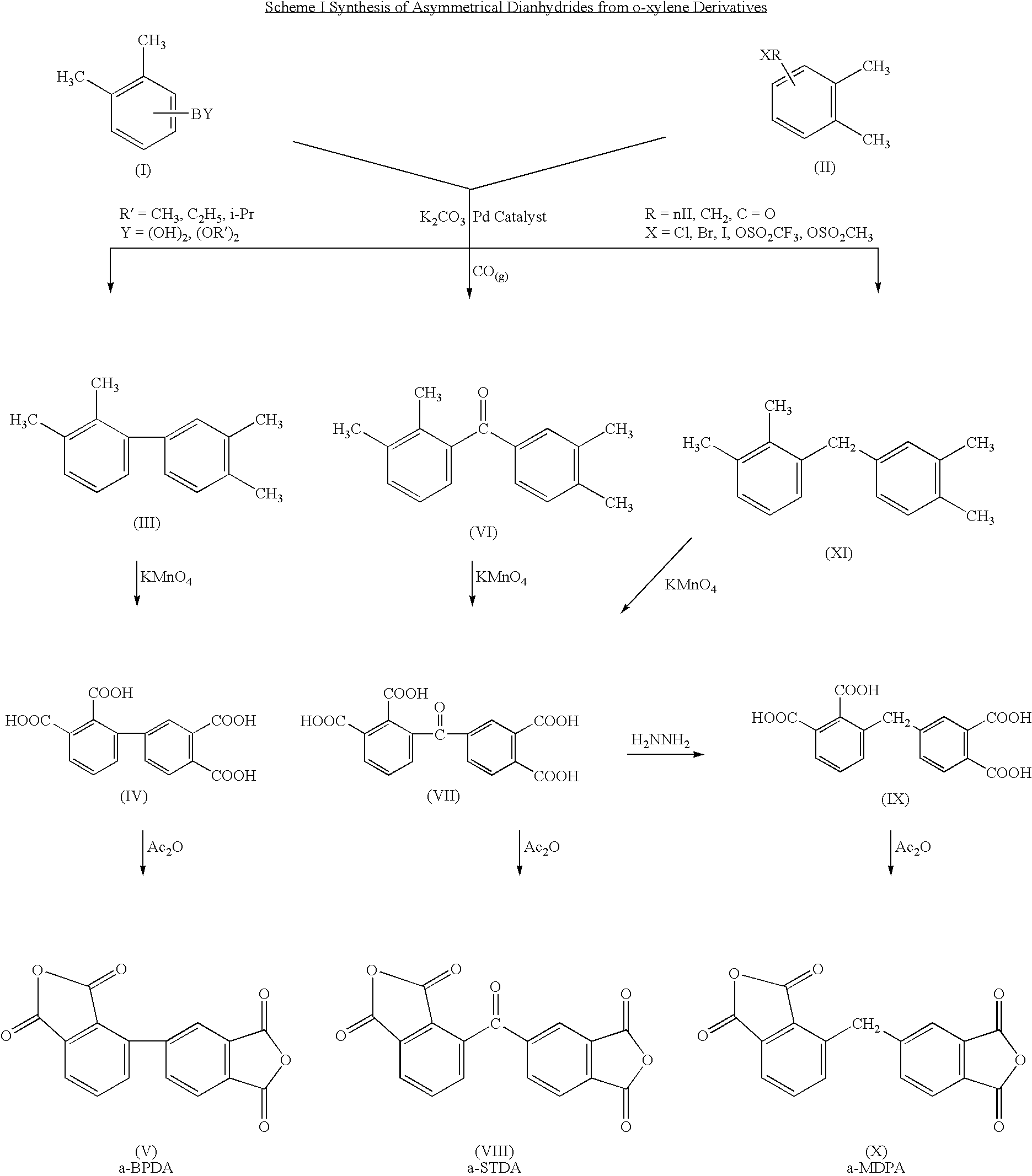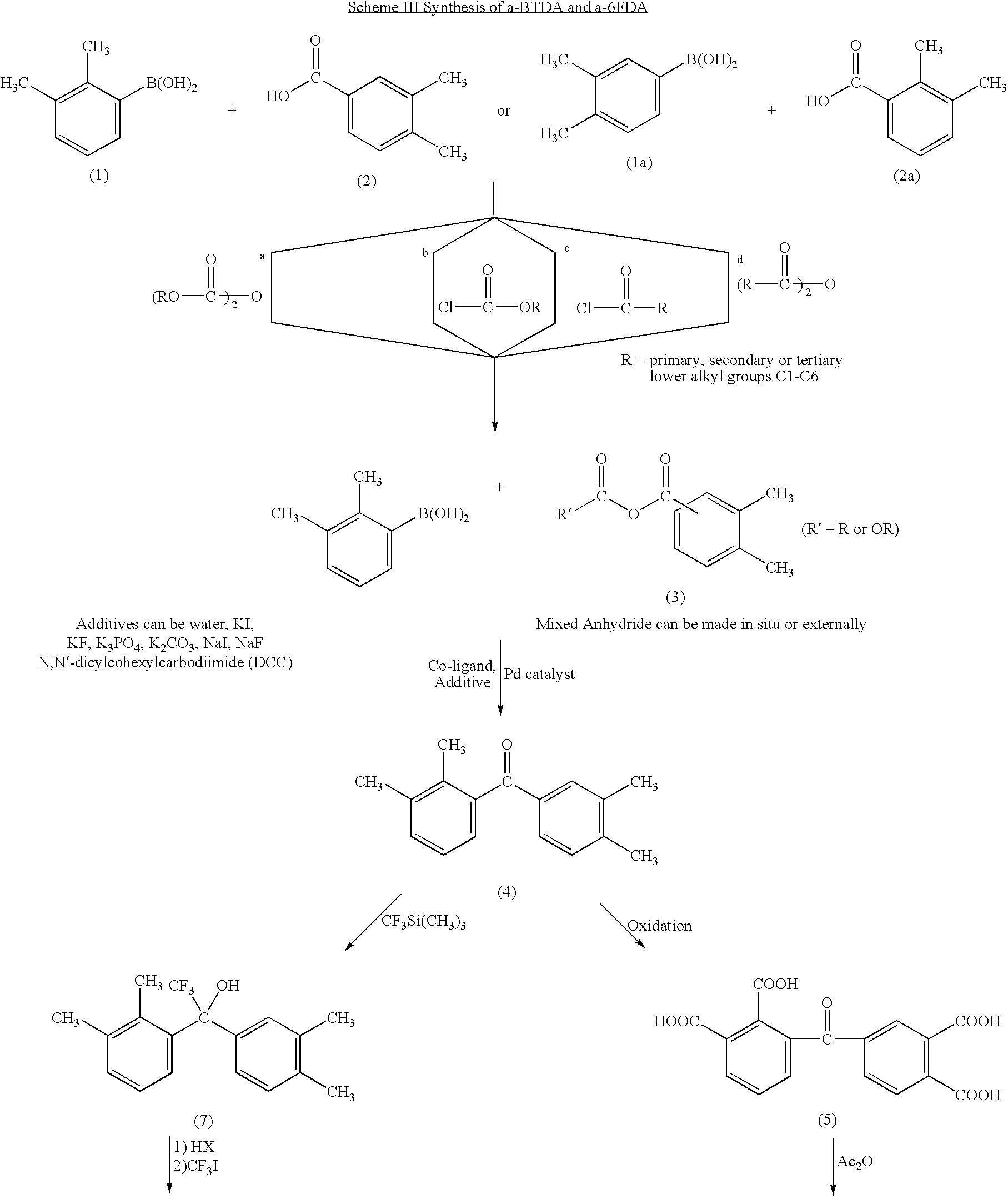Synthesis of asymmetric tetracarboxylic acids and dianhydrides
a technology of tetracarboxylic acids and dianhydrides, which is applied in the preparation of carbonyl compounds, carboxylic compound preparations, transportation and packaging, etc., can solve the problems of laborious and expensive preparation process of components of these polymers, and achieve good adhesion properties, good wear resistance, and hydrolytic stability.
- Summary
- Abstract
- Description
- Claims
- Application Information
AI Technical Summary
Benefits of technology
Problems solved by technology
Method used
Image
Examples
example i
Synthesis of 2,3,3′,4′-tetramethylbenzophenone (4)
[0031]To a 250 ml 3-necked round-bottom flask, 2,3-dimethylphenylboronic acid (3.6 g. 24 mmol). 3,4-dimethylbenzoic acid (3.0 g. 20 mmol), a selected palladium catalyst (0.6 mmol), dimethyl dicarbonate (2.7 g. 30 mmol) and potassium carbonate (6.22 g. 45 mmol) were mixed with 150 ml of dry dioxane. The reaction mixture was heated at 80° C. overnight to become a viscous reaction mixture. 20 ml of water was added to dissolve the heterogeneous reaction mixture, and dioxane was evaporated to dryness. The aqueous solution was extracted with 20 ml of ethyl acetate, dried over anhydrous magnesium sulfate and then evaporated to dryness. The crude product was purified by silica gel column chromatography eluted by hexane / ethyl acetate=20 / 80 to afford 2.0 g (33%) of the product.
Synthesis of 2,3,3′,4′-benzophenonetetracarboxylic acid (5)
[0032]2,3,3′,4′-tetramethylbenzophenone (2.0 g. 8.4 mmol) and potassium permanganate (5.3 g. 33.6 mmol) were m...
PUM
| Property | Measurement | Unit |
|---|---|---|
| temperatures | aaaaa | aaaaa |
| temperatures | aaaaa | aaaaa |
| temperatures | aaaaa | aaaaa |
Abstract
Description
Claims
Application Information
 Login to View More
Login to View More - R&D
- Intellectual Property
- Life Sciences
- Materials
- Tech Scout
- Unparalleled Data Quality
- Higher Quality Content
- 60% Fewer Hallucinations
Browse by: Latest US Patents, China's latest patents, Technical Efficacy Thesaurus, Application Domain, Technology Topic, Popular Technical Reports.
© 2025 PatSnap. All rights reserved.Legal|Privacy policy|Modern Slavery Act Transparency Statement|Sitemap|About US| Contact US: help@patsnap.com



